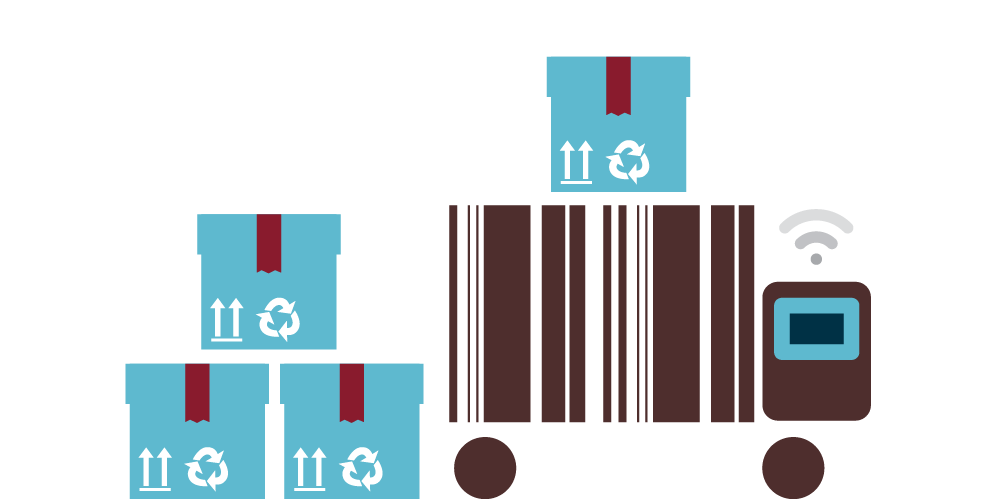Food deliveries: Covid-19 and what to consider when switching to a 'to-the-door' service
Published on 1st April 2020
Amid the mandatory closure of bars, restaurants, pubs and others, UK food and drink businesses converting to delivery services need to take note of logistical, food safety and hygiene considerations.

The government's emergency response to the Covid-19 pandemic has included the mandatory closure of a range of retail and consumer-facing business premises. These include food businesses such as restaurants, bars, public houses, cafés and canteens.
Food retailers, including food markets, supermarkets, convenience stores and corner shops are permitted to stay open, providing social distancing measures are followed (see Guidance). Food manufacturers are not subject to the closure requirements but some may be considering providing a direct-to-consumer model for the first time.
This decision by the government to undertake mandatory closures is unprecedented in recent times and will have created a great amount of uncertainty for those directly affected. However, for some food and drink businesses, there is an opportunity to continue operations by switching to a delivery business model, which the government is continuing to allow to operate and remain open.
The Food Standards Agency has produced some new Guidance and we have provided a list of some of the important points for businesses that are considering providing a delivery service.
Registration and licences
Food Business Operator Registration. Most businesses now considering food delivery will most likely already be registered food business operators. For businesses considering diversifying into this activity, there is a requirement to register before food operations become active. Registration is free. (Click here for further information.)
Premises Licence and Permitted Use. The government has introduced a new permitted development right, which actively supports food businesses to provide delivery and takeaway services from 24 March 2020 to 23 March 2021. During this time, businesses will not need to apply for a change of use. This covers the provision of hot or cold food that has been prepared for consumers for collection or delivery to be consumed, reheated or cooked by consumers off the premises. This will be welcome news for food businesses that have not offered this as a service before and means that businesses can respond quickly to the growing needs of consumers. While no permission is required, you will still need to notify your local planning authority. If you will be providing an online alcohol offering, you should review the terms of your premises licence to ensure that you are able to provide off-sales. If your licence does not already permit this then you must not include alcohol in your offering.
Delivery Considerations
Who will undertake the deliveries? Different considerations will apply depending on whether you engage directly with a food courier service (either directly or through an online marketplace) or use your own employees to deliver food. Appropriate checks should be undertaken on third-party courier services to ensure that their food safety and hygiene standards are at the requisite standard, particularly for more high-risk products such as chilled foods. You should, for example, check what safety systems they have in place to ensure food is delivered at the right and safe temperature and to prevent cross-contamination risk. You should also ask about any additional measures that they have put in place due to the risks posed by coronavirus. The government guidance indicates that the risk of catching the virus from packaging is low. However, it states that "…efforts should be made to ensure it is cleaned and handled in line with usual food safety practices."
Policies and procedures. If you intend to use your own staff for deliveries, then you should review your own food safety management system and health and safety policies and procedures, to ensure they adequately deal with the risks involved in food delivery and that your delivery personnel understand what is expected of them. It is highly likely that your staff will need additional training.
The contract. Thought should be given to delivery service contracts and whether they clearly identify which party is responsible for each aspect of the delivery service and how the parties will deal with any food related incident.
Drop deliveries. Deliveries dropped on the doorstep are becoming the norm in the current Covid-19 pandemic. If you are offering drop deliveries, it would be prudent to think through how customers in different types of properties are notified that their delivery has arrived, particularly with food that needs to be temperature controlled. Consideration should also be given regarding what hygiene control measures should be put in place to reduce the risk of delivery personnel contracting and/or spreading the coronavirus. You should also consider how you will respond to consumers who claim the food was not received in the absence of any proof of delivery.
Food Safety and Hygiene Considerations
Review your hazard analysis and critical control point (HACCP). General HACCP principles should continue to be followed, but should be reviewed to take into account any additional risks relating to distance selling. It is also important to consider any specific risks that are created as a result of how you intend to offer the food products. For example, if you are offering meals for consumers to reheat at home, you should provide instructions on how to store and reheat safely.
Consider any specialist equipment to maintain temperature. Ensuring the proper temperature chain is maintained is important when offering a food delivery service. Depending on your contractual arrangements, it is likely that you will be responsible for ensuring that food does not become unsafe or unfit to eat while in transit. This may require additional or specialist equipment, depending on the specific food being sold. Particular consideration should be given to refrigerated items and perishable goods. Higher risk items include, chilled products, sushi, cooked meat and fish and cooked rice.
Do you have appropriate packaging? Using suitable packaging to reduce the risk of spillage and cross-contamination should also be considered. Food should be transported in packaging strong enough to remain intact and ensure that the product is properly protected whilst in transit.
Labelling considerations. For pre-packed foods all mandatory information such as the name of the food, list of ingredients, etc., must be given in English and provided on the label of the product and included on the website.  For non-pre packed foods that are packaged to the customer's requirements and sold online, allergen information must be provided on the label and the website but the other mandatory requirements legally do not need to be included, although it may be prudent to do so.
Allergen information. This must be provided at two stages in the process:
- Before the purchase of the food is completed, allergen information should be clearly stated in writing online and on menu cards and information should be available to consumers who place orders by telephone.
- When the food is delivered. You should consider the use of stickers on the packaging to identify any allergens present in products or enclose a hard copy of the menu with the allergens clearly marked.
Label takeaway meals clearly, so your customers know which dishes are suitable for those with an allergy.
Selling food online. If you decide to sell directly from your own website to consumers you will need to review your website to ensure it complies with the law. This would include:
- Making sure that you provide all the necessary information - you are legally required to provide certain information when you sell online and set up your website to provide the necessary confirmations of sale. You will need to review your website to check that you do this and you have the capabilities to send out the appropriate confirmations.
- Prices you will need to include information about the full price including VAT and any delivery costs upfront so that consumers can make an informed decision about the price.
- Updating your terms and conditions and privacy policy.
Alternatively if you decide to partner with a marketplace you should review the contract to understand what you will be legally responsible for and what responsibility the marketplace takes.



